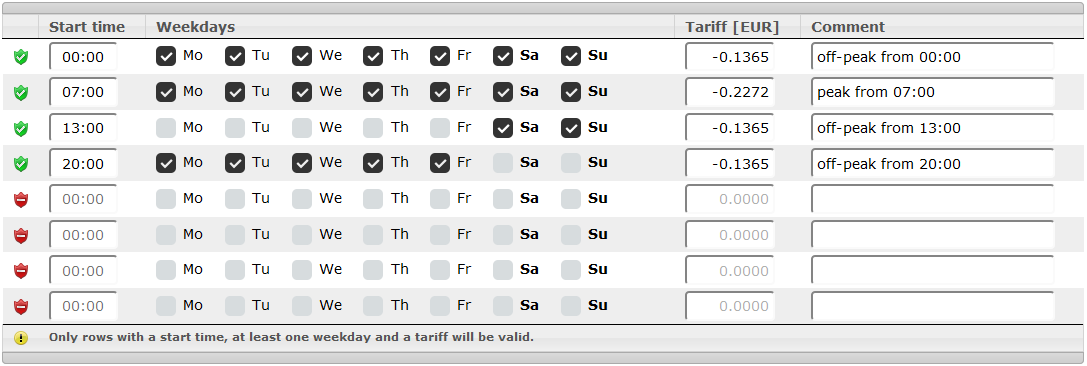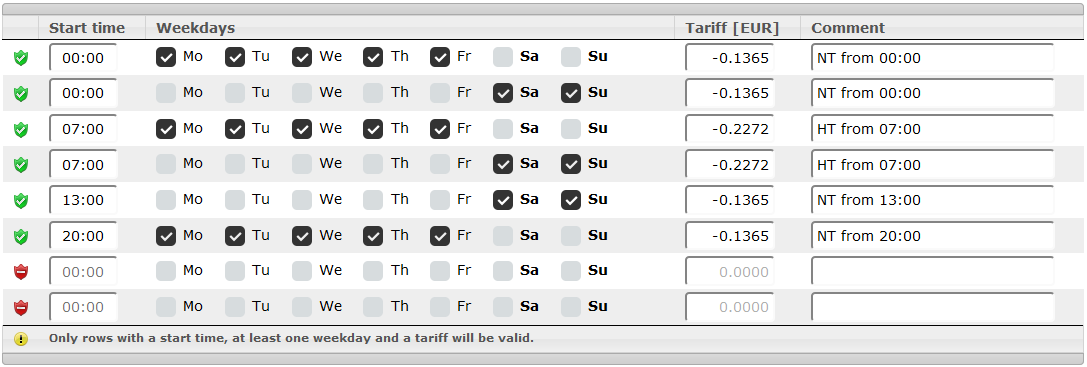Difference between revisions of "Tariff module"
From PhotoVoltaic Logger new generation
m (→Advanced) |
m (→Advanced) |
||
| Line 43: | Line 43: | ||
you are free to maintain this in 2 ways, the result will be the same. | you are free to maintain this in 2 ways, the result will be the same. | ||
| + | |||
| + | === Consolidated === | ||
[[File:TariffAdvanced1.png]] | [[File:TariffAdvanced1.png]] | ||
| + | |||
| + | === Detailed === | ||
[[File:TariffAdvanced2.png]] | [[File:TariffAdvanced2.png]] | ||
Revision as of 10:27, 13 May 2014
Tariffs are costs/earnings depending on weekdays and/or day times.
If you assign a tariff to a channel, it will overwrite the cost attribute.
If you don't need tariff, e.g. for constant compensations for electricity fed into the grid, you should use the cost attribute!
Overview
A tariff is defined by time slices, when the settings start and is valid without date limit.
If a cost changes e.g. for next year, create a new time slice with the new starting date.
You will see all your tariffs and the starting dates:
Master data
A tariff is described by a unique name and an optional description.
Time slice
A time slice for a tariff is defined by
- Starting date
- Fix cost per day, e.g. a basic fee for imports (optional)
- Time depended data
- Starting time
- Weekday
- Cost
Simple
Simple example is a fix import rate, only changes each year, so the cost is for each weekday and any time the same.
Advanced
Here we have a tariff with high-rate and low-rate tariff times.
you are free to maintain this in 2 ways, the result will be the same.
Consolidated
Detailed
Overview
To check your settings, you cat open the details view. It will simulate the costs for this week.




